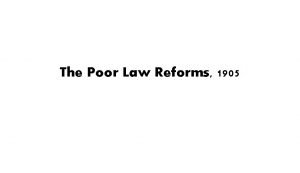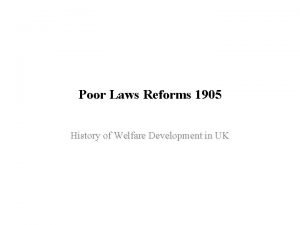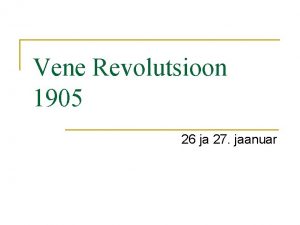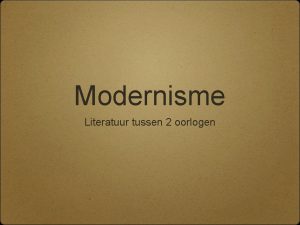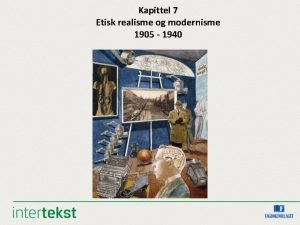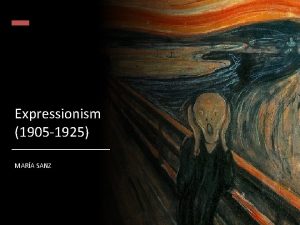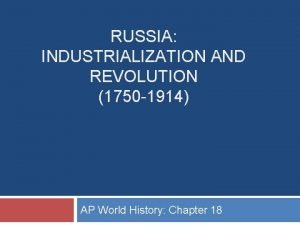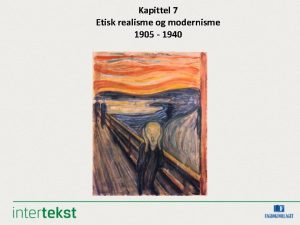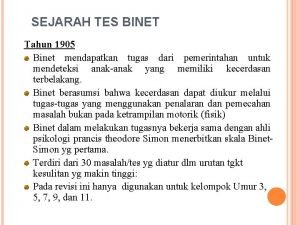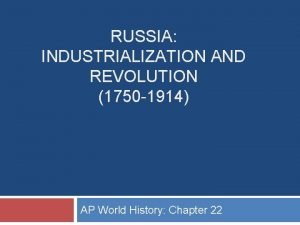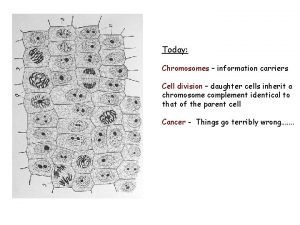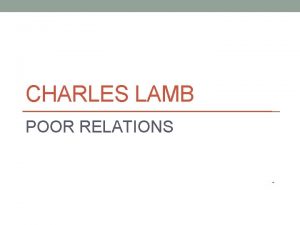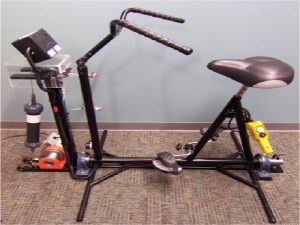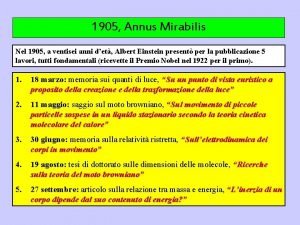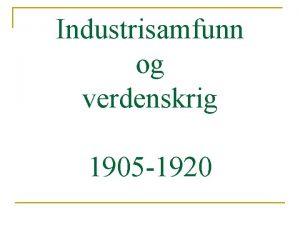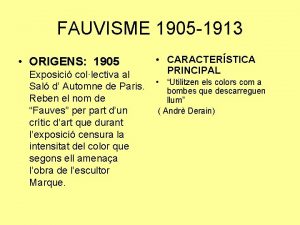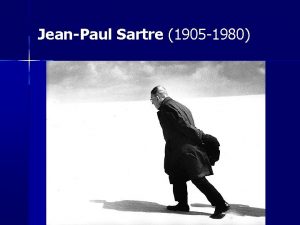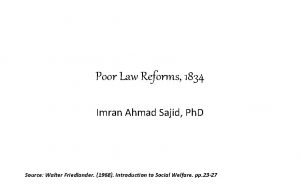The Poor Law Reforms 1905 THE POOR LAW
















- Slides: 16

The Poor Law Reforms, 1905

THE POOR LAW COMMISSION OF 1905 • At the beginning of the 20 th century, the working class in England faced the grave threat of unemployment. This was peculiar in the mining regions. • Due to superior transportation and production of the mining industry in the USA and the better working conditions in the industry in Europe, the British Coal industry could not compete with and were forced to close down.

• Other needed fewer workers and many mines had exhausted their production. • As a result, masses of unemployed coal miners and their families asked for relief. • But it was not possible to put entire communities into the work houses as required under the poor law of 1834. • Some mining towns applied to the parliament for relief. • Private charities found themselves unable to support tens of thousands of jobless families for unlimited periods.

• The Liberal party, in 1905, promised to reform the poor Laws if came into power. After victory, the new government embarked upon a series of reforms. • A Royal Commission on the Poor Laws and Relief of Distress” was appointed with Lord George Hamilton as Chairman.

• It was presented to the Commission that by that time some 9, 28, 621 persons were receiving aid from the government out of which 3, 000 were children, living under most unafvourable conditions. • The poor Law commission presented the following (04) recommendations; -

RECOMMENDATIONS 1. Poor law Unions and Boards of Guardians be replaced by County Councils reducing the no. of local relief administration by 1/3 rd. 2. The punitive character of the poor relief should be abolished and replaced by a more humane Public assistance programme.

3. Mixed alms houses be abolished and mentally deficient and mentally ill people be treated in hospitals. Children should be placed in foster homes or boarding–schools. 4. National pension for the aged, free hospital treatment for the poor, free public employments services, and programme of social Insurance with unemployment and invalidity benefits be introduced.

PARLIAMENT ACTS • Already during the session of the Royal Commission social legislation had started. • (1) The provision of, Meals Act of 1906, organized free school lunches in the elementary schools. • (2) The Education Act of 1907 provided medical examination of school children.

• (3) The Old-age Pension Act of 1908 secured a weekly pension of five Shillings for deserving poor persons over the age of seventy. • (4) Under the Unemployed Workmen act of 1905, unemployed worker were provided relief administered by the Local distress committees which tried to find jobs for them.

• (5) On the recommendations of the Royal Commission, The Labour Exchange Act of 1909, empowered the Board of Trade ( equal to the department of Trade and Commerce in USA) to set up labour exchanges ( employment services) – to help employers find good workers and – help workers find a job and to increase mobility of labour.

• (6) National Insurance act of 1911 –Under the Insurance legislation, the urgent need for protection of the injured workers, the Royal Commission in 1909, had recommended the Compulsory Unemployment Insurance.

• The programme was financed by contribution by the workers and their employers and a matching grant by the government.

• Under the scheme the insured worker received medical treatment from a practitioner who simply prescribed medicines. • No facility of hospitalization or treatment by specialist was extended. • The family of the insured worker could not get these facilities.

• Cash allowances during the time of sickness were limited to twenty-six weeks. After this period a reduced disability allowance was paid. • Maternity benefits were given at confinement to insured women workers and to the wives of insured workers.

• In 1925, the Widows, the Orphans and the Old Age, Contributory Pensions Act, extended the principle of social insurance to men over sixtyfive and women over sixty years of age. , and to widows, Orphans and dependent children under fourteen (sixteen in case the children were in school ).

�The programme of insurance was totally different from poor relief. �Its contributions and benefits were determined by law. �Payments were made upon the arrival of contingency —old age, widow and orphanhood, sickness, unemployment etc—without regard to the financial status of the insured worker. �There was no disgrace in receiving fund which were contributed by a person / spouse.
 Poor law commission 1905
Poor law commission 1905 Poor law commission 1905
Poor law commission 1905 Vene revolutsioon 1905
Vene revolutsioon 1905 Modernisme literatuur
Modernisme literatuur Kamplyrikk
Kamplyrikk Mesaj expresionist apelativ
Mesaj expresionist apelativ Russian revolution of 1905 definition ap world history
Russian revolution of 1905 definition ap world history Etisk realisme og modernisme
Etisk realisme og modernisme Mountains at collioure
Mountains at collioure Revolução 1905
Revolução 1905 Sejarah tes binet
Sejarah tes binet 1905 time
1905 time Em 1905
Em 1905 Russian industrialization ap world
Russian industrialization ap world 1905-1828
1905-1828 Tanzimat reforms definition
Tanzimat reforms definition Spindle fibers
Spindle fibers
